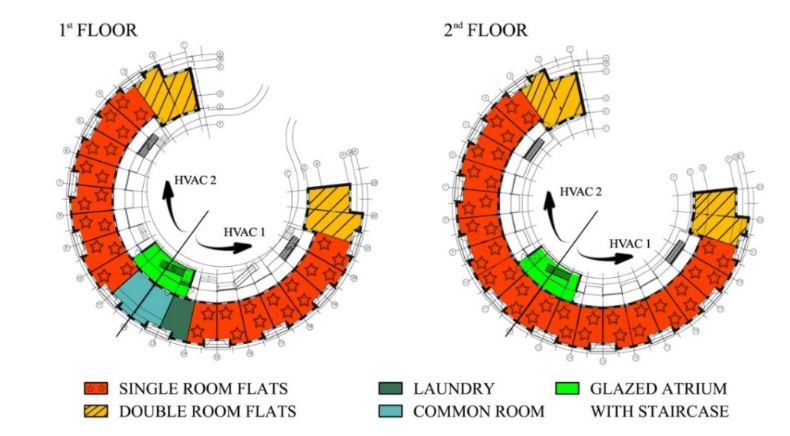ABSTRACT
This paper is based on the experience of introducing wireless sensor networks (WSNs) into the building industry in Denmark and in a rural area of Greenland. There are very real advantages in the application of the technology and its consequences for the life cycle operation of the building sector. Sensor networks can be seen as an important part of the Internet of Things and may even constitute an Internet of Sensors, since the communication layers can differ from the Internet standards.
The current paper describes the case for application, followed by a discussion of the observed adaptive advantages and consequences of the technology. Essentially, WSNs constitute a highly sophisticated technology that is more robust in a rural context due to its extremely simple installation procedures (plug and play) allowing the use of local less-skilled labour, and the possibility of reconfiguring and repurposing its use remotely.
CASE DESCRIPTION

Figure 2. Layout of building, which was to be split into two similar-sized sections for experimental purposes
A full-scale installation was planned for a dormitory in cooperation with ARTEK, the Centre for Arctic Technology in Sisimiut, Greenland. WSN seemed relevant due to its high flexibility. The case is presented here with observations with respect to the introduction of the Sensing Internet in rural areas. The building and its ventilation scheme are shown in Figure 2.
RESULTS AND DISCUSSION
The current paper originated in the work of implementing WSNs in the building sector, which would dramatically improve the value chain of this sector. There are a number of reasons for this:
1. By designing WSNs in ways which make repurposing possible, a sensor can be reused during the life cycle of buildings, reducing costs to almost zero. However, this requires remote access for reconfiguration.
2. As a consequence, large savings can be made on building monitoring and automation.
3. The quality of components, assembly, operation, maintenance, renovation, and many other aspects of the buildings can be improved by utilizing the data from the WSN sensors.
4. Procedures for building site management and building facility management can be improved.
Source: Technical University
Author: Alfred Heller
>> More Wireless Sensor Networks Projects Abstract for Engineering Students